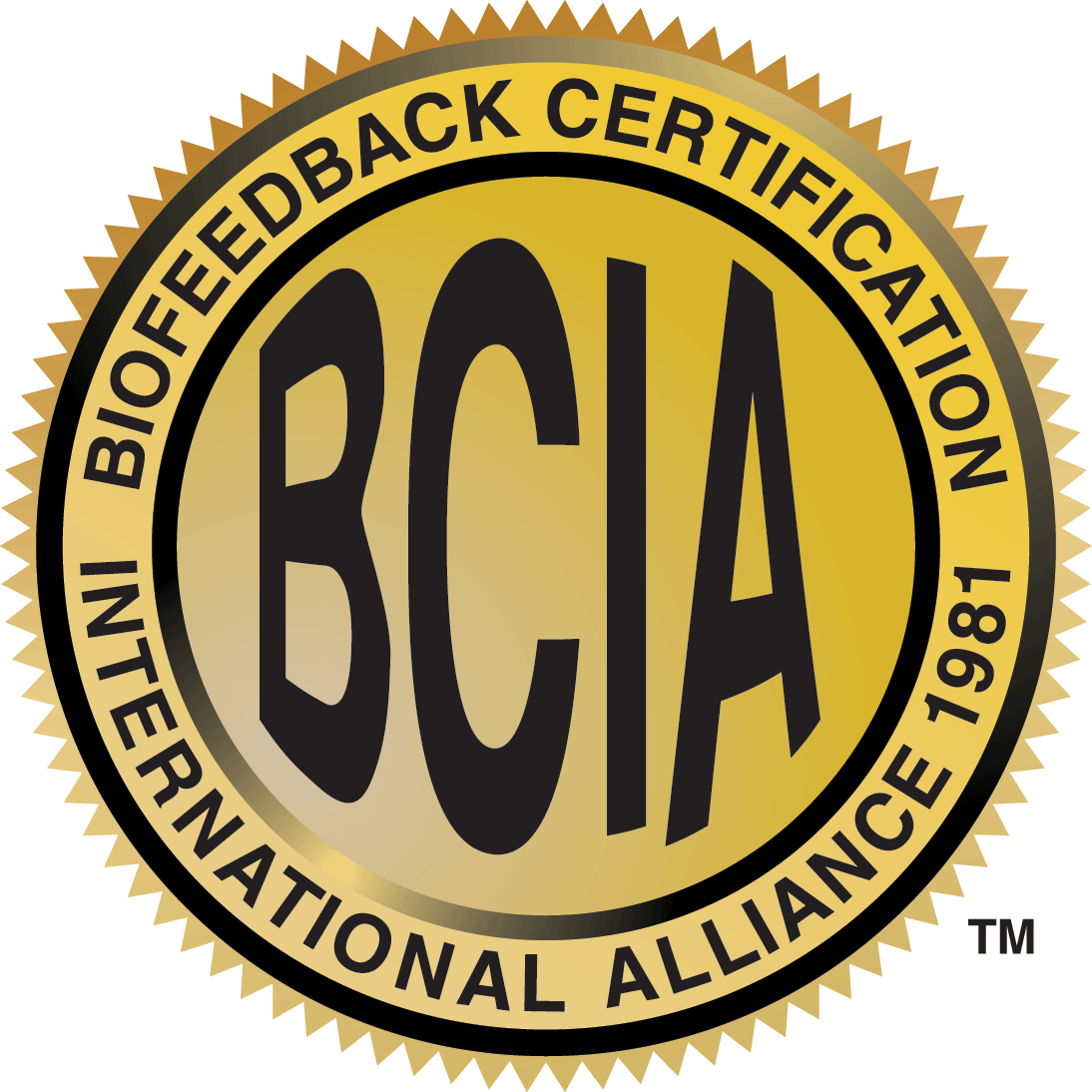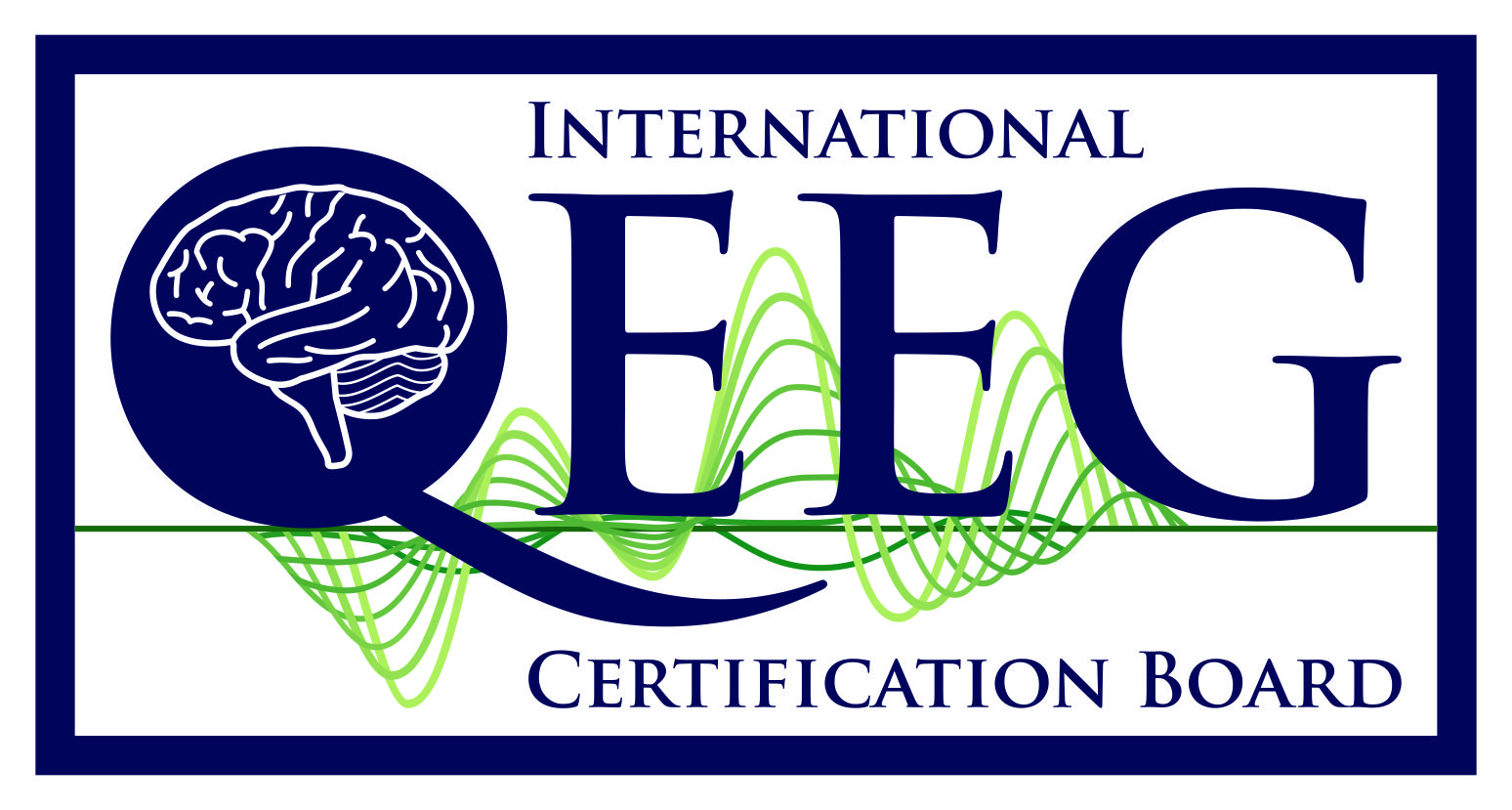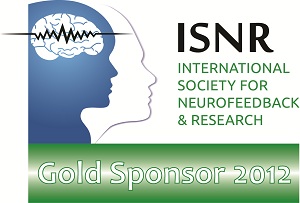qEEG Certification 40 Hour Didactic Workshop and 21 Hour Didactic qEEG Introduction with Neurofeedback + Implementation Virtual Brain Based Assessment and Treatment Therapy Alternatives for the 21st Century
21+ Hour Didactic qEEG Introduction with Neurofeedback + Implementation
(The next evolution in Neurofeedback/Neuromodulation is QEEG BrainMapping!)
8 Day Combination Special for $1795
September 5, 20 & 21, 2024
and
QEEG Certification 40 Hour Didactic Workshop
September 6, 7, 12, 13 & 14, 2024
Virtual Workshop
QEEG CERTIFICATION 40 HOUR Didactic Workshop and 21+ Hour Didactic qEEG Introduction with Neurofeedback + Implementation – Virtual Workshop – Can be used for recertification!
QEEG is a scientific assessment and diagnostic tool to measure neurofeedback, hyperbaric, and other therapies and modalities using brainwave activity.
|
|
For Experience Levels: Introductory/Intermediate
This workshop, which is uniquely taught by five QEEG diplomates with diverse backgrounds, provides not only an opportunity to fulfill the QEEG Certification Board requirements, but also provides a broad and up-to-date exposure to the current state of QEEG and neurofeedback. Attendees who are seeking QEEG Board certification, as well as those who have experience in QEEG and neurofeedback will find this a comprehensive and engaging workshop that by definition will include essential material to ensure a solid grasp of current QEEG concepts.
Who is this workshop for?
- Psychologists, Psychiatrists, Social Workers, MFTs, Counselors, Substance Abuse Counselors, Nurses, Dentists, Chiropractors, and technicians under licensed supervision, and other health care professionals accepted by BCIA
- Certain workshops may require prerequisite training/licensure. Call STS for further information.
- Medical doctors are welcome to attend all STS workshops. CME’s are not guaranteed.
- As well as other health care professionals accepted by BCIA
Learning Objectives:
1. Specify the relevant issues pertaining to scope of practice.
2. Explain the difference between ethical rules and legal rules in clinical practice.
3. Identify pertinent client rights and standards of care related to EEG monitoring.
4. Contrast the ethical and legal considerations as an EEG or QEEG provider.
5. Describe the physiological principles of the origins of the EEG in a client.
6. Specify the differences between EEG and QEEG.
7. Summarize the various approaches utilized in conducting EEG recording sessions.
8. Describe the various frequency bands and QEEG components.
9. Specify the Brodmann area functions and network connections.
10. Explain the l0-20 International Standard placement for 19 channel EEG recording.
11. Explain sources in the brain from which various frequency bands normally emanate, and their physiological basis.
12. Identify at least 5 sources of noncortical biological artifact in the EEG.
13. Indicate the developmental changes in the EEG.
14. Specify the various functions of cortical structures.
15. Contrast differences between t-tests, alpha and p levels, correlational relationships, and z-scores.
16. Explain how clinically measured T-tests, alpha and P levels, correlational relationships, and z-score measures are used in QEEG as decision-making tools.
17. Identify the concepts of Type I and Type II error, and power of a statistical test.
18. Describe how to interact with a client to achieve an optimal EEG or QEEG recording.
19. Identify how to make necessary adjustments or instructions during an EEG or QEEG recording session, depending on client response or observed recordings.
20. Contrast the conditions identifiable using EEG with those identifiable when using QEEG.
21. Describe the commonalities and differences in available EEG and QEEG recording devices and software.
22. Identify the best subject inclusion and exclusion criteria for building a database.
23. Explain the fundamental statistical considerations within QEEG databases.
24. Distinguish the levels of experimental design in scientific research.
25. Describe examples of the various contemporary methods of processing and displaying QEEG statistical data (maps, etc.).
26. Explain how clinical presentation of a client may affect the EEG.
27. Identify whether a client is suitable for an EEG or QEEG study.
28. Describe the steps in conducting a QEEG analysis.
29. Describe the use of Z-scores in QEEG analysis and interpretation.
30. Indicate various methods of EEG assessment.
31. Describe what EEG signatures should be referred out to other professionals.
32. Demonstrate an understanding of LORETA interpretation and training along with limitations.
33. Describe the concept of neuroplasticity in relation to the EEG and QEEG
34. Demonstrate knowledge about general cognitive and clinical changes that take effect after neurofeedback training based upon published scientific articles.
35. Describe EEG connectivity metrics such as coherence, phase, and asymmetry.
36. Explain phase and coherence, how they relate and what they can mean in the interpretation of the qEEG.
37. Explain what defines the various EEG montages and the circumstances of their use.
38. Describe how LORETA and sLORETA-based interpretation and training provide unique capabilities compared to surface metrics.
39. Discuss a working knowledge of the montages, transforms and power displays along with the specific perspectives they can provide a reader of qEEG output.
40. Explain how to ensure that an EEG recording session has minimal artifacts or interference.
41. Create and construct a report on an EEG or QEEG session tailored to the client or referring practitioner’s needs.
To Register:
- Call (800) 447-8052 or (216) 766-5707
- Email: info@stresstherapysolutions.com
Evaluations and Certificates are available by email and online following course completion at www.ceuregistration.com
Purchase Options:
5 Day QEEG CERTIFICATION 40 Hour Didactic – Virtual Workshop @ $1,295.00
3 Day 21+ Hour Didactic QEEG Introduction with Neurofeedback + Implementation @ $650.00
Complete 8 Day QEEG Certification 40 Hour Didactic Workshop and 3 Day 21+ Hour Didactic qEEG Introduction with Neurofeedback + Implementation – SAVE UP TO $150! @ $1,795.00
Cancellation Policy: StressTherapy Solutions reserves the right to cancel any STS Event without notice. Although cancellation is extremely unlikely, workshops will be rescheduled as necessary due to instructor illness, flight cancellations, or for any reason beyond our control. StressTherapy Solutions will not be held responsible for restricted or non-refundable air fares.
For questions or concerns, please call StressTherapy Solutions at (800)447-8052 or (216)766-5707
Email us at info@stresstherapysolutions.com or stsinc@StressTherapySolutions.com
Pay Using Paypal (see below)
Day 1 QEEG CERTIFICATION 40 Hour Didactic – Virtual Workshop
8 CE Hours towards EEG/QEEG certification
Friday, September 6, 2024
8:30AM – 6:00PM Eastern Daylight Time
|
|
|
|
8:30 AM – 9:30 AM – History (1 Hour)
-
Basic knowledge of the history of quantitative electrophysiology
9:30 AM – 11:30 AM – Ethics (2 Hours)
-
Responsibilities and liability in provision of services
Break – 11:30 AM – 11:45 AM (15 Minutes)
11:45 AM – 12:45 AM – Technical (1 Hour)
-
Topographical representation of EEG
-
Electrodes and acquisition systems
Lunch – 12:45 PM – 1:45 PM (1 Hour)
1:45 PM – 2:45 PM – Neuroscience (1 Hour)
-
Cortical and sub cortical structures macro and microanatomy
2:45 PM – 4:45 PM – Technical (2 Hours)
-
Instrumentation (Acquisition and review parameters/settings)
-
Montages
Break – 4:45 PM – 5:00 PM (15 Minutes)
5:00 PM – 6:00 PM – QEEG (1 Hour)
-
Understanding the uniqueness of QEEG analysis from other neuro imaging techniques and conventional metrics derived from the EEG signal
-
Use of QEEG norms and methods used to derive QEEG norms
Learning Objectives for Day 1
A.M.
1. Specify the relevant issues pertaining to scope of practice.
2. Explain the difference between ethical rules and legal rules in clinical practice.
3. Identify pertinent client rights and standards of care related to EEG monitoring.
4. Contrast the ethical and legal considerations as an EEG or QEEG provider.
P.M.
5. Describe the physiological principles of the origins of the EEG in a client.
6. Specify the differences between EEG and QEEG.
7. Summarize the various approaches utilized in conducting EEG recording sessions.
8. Describe the various frequency bands and QEEG components.
|
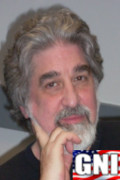
Thomas Collura
Primary Instructor
Ph.D, QEEG-D, BCN, LPCC-S
|
Day 2 QEEG CERTIFICATION 40 Hour Didactic – Virtual Workshop
8 CE Hours towards EEG/QEEG certification
Saturday, September 7, 2024
8:30AM – 6:00PM Eastern Daylight Time
|
|
8:30 AM – 9:30 AM – Neuroscience (1 Hour)
-
Cortical and subcortical structures macro and microanatomy
9:30 AM – 11:30 AM – EEG (2 Hours)
-
Basic knowledge of neurophysiology of EEG
-
Editing and identifying artifacts
-
Normal waveform patterns
-
Standards of EEG acquisition procedures including activation
Break – 11:30 AM – 11:45 AM (15 Minutes)
| 
Thomas Collura
Primary Instructor
Ph.D, QEEG-D, BCN, LPCC-S
|
|
11:45 AM – 12:45 PM – Technical (1 Hour)
-
Montages
-
Electrical/Clinical Safety
Lunch – 12:45 PM – 1:45 PM (1 Hour)
1:45 PM – 3:45 PM – Neuroscience (2 Hours)
Break – 3:45 PM – 4:00 PM (15 Minutes)
4:00 PM – 6:00 PM Research (2 Hours)
-
Basic vs Clinical Research
-
Exploratory Research vs. Hypothesis testing
-
Experimental Design
-
Basic Statistics and differences between parametric versus nonparametric statistics
-
Definition of types of validation and reliability
-
Meta-Analysis
-
Reporting Results and Publication Standards
Learning Objectives for Day 2:
A.M.
9. Specify the Brodmann area functions and network connections.
10. Explain the l0-20 International Standard placement for 19 channel EEG recording.
11. Explain sources in the brain from which various frequency bands normally emanate, and their physiological basis.
12. Identify at least 5 sources of noncortical biological artifact in the EEG.
13. Indicate the developmental changes in the EEG.
P.M.
14. Specify the various functions of cortical structures.
15. Contrast differences between t-tests, alpha and p levels, correlational relationships, and z-scores.
16. Explain how clinically measured T-tests, alpha and P levels, correlational relationships, and z-score measures are used in QEEG as decision-making tools.
17. Identify the concepts of Type I and Type II error, and power of a statistical test.
18. Describe how to interact with a client to achieve an optimal EEG or QEEG recording.
19. Identify how to make necessary adjustments or instructions during an EEG or QEEG recording session, depending on client response or observed recordings.
20. Contrast the conditions identifiable using EEG with those identifiable when using QEEG.
21. Describe the commonalities and differences in available EEG and QEEG recording devices and software.
|
Day 3 QEEG CERTIFICATION 40 Hour Didactic – Virtual Workshop
8 CE Hours towards EEG/QEEG certification
Thursday, September 12, 2024
8:30AM – 6:00PM Eastern Daylight Time
|
|
|
|
|
|
8:30 AM – 9:30 AM – Neuroscience (1 Hour)
9:30 AM – 11:30 AM – EEG
(2 Hours)
-
Abnormal EEG waveforms and rhythms. Visual examination of EEG traces to identify time and location of artifact and pathology.
-
The use of different EEG montages for wave form analysis
|

Thomas Collura
Primary Instructor
Ph.D, QEEG-D, BCN, LPCC-S
|
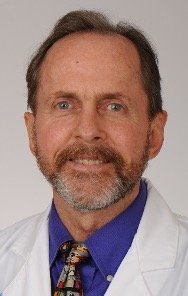
Robert (Rusty) Turner
Neurologist, BCN, qEEG-D
|
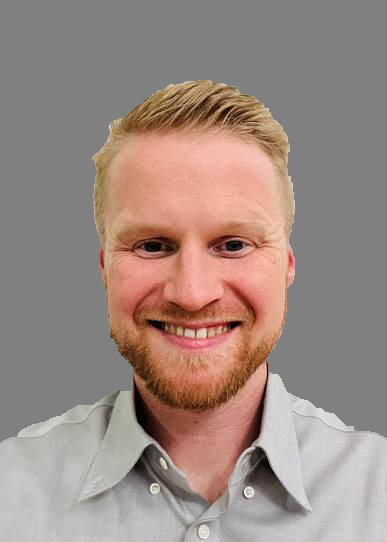
David Ims,
M.A., QEEG-D
|
|
Break – 11:30AM – 11:45AM (15 Minutes)
11:45 AM – 12:45 PM – Clinical (1 Hour)
-
Emphasis of correlating QEEG with other clinical diagnostic evidence
-
Appropriateness of a QEEG referral
Lunch – 12:45 PM – 1:45 PM (1 Hour)
1:45 PM – 2:45 PM – Neuroscience (1 Hour)
Break – 2:45 PM – 3:00 PM (15 Minutes)
3:00 PM – 5:00 PM – QEEG (2 Hours)
-
The functional correlates of abnormal EEG changes
-
The role of the QEEG metrics toward understanding and treating specific clinical presentations; and the relationship of the QEEG to other clinical examinations.
5:00 PM – 6:00 PM – Clinical/Forensic (1 Hour)
-
Patient conditions related to QEEG Evaluation
-
History and prior clinical and laboratory reports review
Learning Objectives for Day 3:
A.M.
22. Identify the best subject inclusion and exclusion criteria for building a database.
23. Explain the fundamental statistical considerations within QEEG databases.
24. Distinguish the levels of experimental design in scientific research.
25. Describe examples of the various contemporary methods of processing and displaying QEEG statistical data (maps, etc.).
P.M.
26. Explain how clinical presentation of a client may affect the EEG.
27. Identify whether a client is suitable for an EEG or QEEG study.
28. Describe the steps in conducting a QEEG analysis.
29. Describe the use of Z-scores in QEEG analysis and interpretation.
30. Indicate various methods of EEG assessment.
|
Day 4 QEEG CERTIFICATION 40 Hour Didactic – Virtual Workshop
8 CE Hours towards EEG/QEEG certification
Friday, September 13, 2024
8:30AM – 6:00PM Eastern Daylight Time
|
|
|
|
|
8:30 AM – 10:30 AM – Neuroscience (2 Hours)
-
Behavioral I correlates to brain regions and networks
Break – 10:30 AM – 10:45 AM (15 Minutes)
10:45 AM – 12:45 PM – Psychopharmacology (2 Hours)
-
Relationships of drugs and neurotransmitter modulation
-
Understanding of basic principles of half-lives and impact on interpreting QEEG Guidelines for the evaluation of drug effects on brain and behavior in individual patients
-
Understand the effects of common psychopharmaceutical agent classes on EEG/QEEG data
Lunch – 12:45 PM – 1:45 PM (1 Hour)
1:45 PM – 3:45 PM – Clinical/ Forensic (2 Hours)
-
Knowledge regarding limits of interpreting QEEG regarding choice of reference databases and -recognizing statistical probability versus clinical probability
-
Recognizing the difference in deposition as “fact/treating” witness vs “expert” witness
-
Understand Daubert vs Frye standards and their application to QEEG interpretation and use
Break – 3:45 PM – 4:00 PM (15 Minutes)
4:00 PM – 6:00 PM QEEG (2 Hours)
-
Demonstrate basic knowledge of Brodmann Areas in terms of how areas were defined and most common functional attributes to these regions
-
Demonstrate knowledge of graph theory and definitions of terms
-
Demonstrate knowledge of Current Source Density maps, metrics, and graphic methods of such (e.g., methods voxel representation of current course methods)
-
Reports based on QEEG metrics should relate these to clinical history, symptoms and other clinical assessments
Learning Objectives for Day 4:
A.M.
31. Describe what EEG signatures should be referred out to other professionals.
32. Demonstrate an understanding of LORETA interpretation and training along with limitations.
33. Describe the concept of neuroplasticity in relation to the EEG and QEEG
34. Demonstrate knowledge about general cognitive and clinical changes that take effect after neurofeedback training based upon published scientific articles.
35. Describe EEG connectivity metrics such as coherence, phase, and asymmetry.
36. Explain phase and coherence, how they relate and what they can mean in the interpretation of the qEEG.
P.M.
37. Explain what defines the various EEG montages and the circumstances of their use.
38. Describe how LORETA and sLORETA-based interpretation and training provide unique capabilities compared to surface metrics.
39. Discuss a working knowledge of the montages, transforms and power displays along with the specific perspectives they can provide a reader of QEEG output.
40. Explain how to ensure that an EEG recording session has minimal artifacts or interference.
41. Create and construct a report on an EEG or QEEG session tailored to the client or referring practitioner’s needs.
|
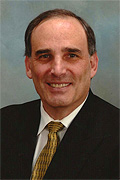
David Cantor,
PhD., M.S, QEEG-D, BCN |
Day 5 QEEG CERTIFICATION 40 Hour Didactic – Virtual Workshop
8 CE Hours towards EEG/QEEG certification
Saturday, September 14, 2024
8:30AM – 6:00PM Eastern Daylight Time
|
|
|
8:30 AM – 10:30 AM – QEEG (2 Hours)
-
Use of QEEG norms and methods used to derive QEEG norms
-
The functional correlates of abnormal EEG changes
-
The role of the QEEG metrics toward understanding and treating specific clinical presentations; and the relationship of the QEEG to other clinical examinations.
Break – 10:30 AM – 10:45 AM (15 Minutes)
| 
Thomas Collura
Primary Instructor
Ph.D, QEEG-D, BCN, LPCC-S |
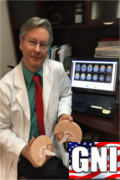
Richard McAlister
QEEG-D,DC, BCN |
|
10:45 AM – 12:45 PM – EEG (2 Hours)
-
Abnormal EEG waveforms and rhythms. Visual examination of EEG traces to identify time and location of artifact and pathology.
-
The use of different EEG montages for wave form analysis
Lunch – 12:45 PM – 1:45 PM (1 Hour)
1:45 PM – 3:45 PM – QEEG (2 Hours)
-
Demonstrate knowledge of Current Source Density maps, metrics, and graphic methods of such (e.g., methods voxel representation of current course methods)
-
Reports based on QEEG metrics should relate these to clinical history, symptoms, and other clinical assessments
Break – 3:45 PM – 4:00 PM (15 Minutes)
4:00 PM – 6:00 PM EEG (2 Hours)
-
Abnormal EEG waveforms and rhythms. Visual examination of EEG traces to identify time and location of artifact and pathology.
-
The use of different EEG montages for wave form analysis
|
Disclosure Statement:
Dr. Turner MD Neurologist – There is no conflict of interest or commercial support for this program.
Dr. Cantor, Clinical Licensed Psychologist – CEO of BrainDX, LLC
Dr. Collura – Owner/Employee/Founder of BrainMaster Technologies, Inc., Bedford OH
– All of the material taught is of a scientific and clinical nature.
Mr. Ims MA in Psychology – There is no conflict of interest or commercial support for this program.
Dr. McAlister DC – There is no conflict of interest or commercial support for this program.
*The science and information is continually changing and evolving in the field of neurofeedback and QEEG. This course will regularly update our workshops with new information as it evolves.
21+ Hour Didactic qEEG Introduction with Neurofeedback + Implementation
The following information is in regards to the 21+ Hour Didactic qEEG Introduction with Neurofeedback + Implementation and is not part of the 5 Day QEEG CERTIFICATION 40 Hour Didactic – Virtual Workshop
DAY 1 of 21+ Hour Didactic qEEG Introduction with Neurofeedback
and Implementation
Thursday, September 5, 2024
9:00AM – 5:30PM Eastern Daylight Time
|
|
9:00 AM – 9:30 AM – QEEG Prep Class (30 Minutes)
- Review of qEEG requirement
- Distribute all class materials and explain the use of DropBox
- Explanation of distributed materials and how to access them during class time
- Explain how the exam is administered
9:30 AM – 10:45 AM – qEEG 101 – This subject matter is the foundation for the entire body of work presented in this workshop (1 Hour and 15 Minutes)
- Brainwave explanations
- International 10/20 sites and Brodmann Areas
- Interpreting Raw EEG – VERY BASIC – (Details will be covered in depth during the remainder of the course)
- 3 montages
- Basic artifacting
- Interpreting FFT Absolute Power Maps and Absolute Power ZScore maps
- Interpreting Alpha and Background Frequency
- Interpreting Theta/Beta Ratio
Break – 10:45 AM – 11:00 AM (15 Minutes)
11:00 AM – 12:30 PM – qEEG 101 Continued (1 Hour and 30 Minutes)
- Review and interpret several qEEG for practice
- Interpreting and presenting the qEEGPro Report
- Protocol selection based on the qEEG
- Record keeping
Lunch – 12:30 PM – 1:30 PM (1 Hour)
1:30 PM – 3:45 PM (2 Hours and 15 Minutes)
- The qEEG Report Template
- Writing your own qEEG Report (5 reports required by the qEEG Board for Certification)
Break – 3:45 PM – 4:00 PM (15 Minutes)
4:00 PM – 5:30 PM (1 Hour and 30 Minutes)
*The 21+ Hour Didactic qEEG Introduction with Neurofeedback + Implementation is not part of the 40 hour certification, however, it is an essential add-on workshop
|
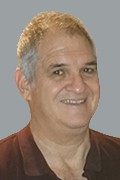
Jeffrey Reich
QEEG-D, BCN, STS GNI Instructor |

Thomas Collura
Ph.D, QEEG-D, BCN, LPCC-S |
DAY 2 of 21+ Hour Didactic qEEG Introduction with Neurofeedback
+ Implementation
Friday, September 20, 2024
9:00AM – 5:30PM Eastern Daylight Time
|
|
|
| 9:00 AM – 10:45 AM (1 Hour and 45 Minutes)
Break – 10:45 AM – 11:00 AM (15 Minutes)
11:00 AM – 12:30 PM Medication (1 Hour and 30 Minutes)
Lunch – 12:30 PM – 1:30 PM (1 Hour)
1:30 PM – 3:45 PM (2 Hours and 15 Minutes)
- Medication Presentation continued if necessary
- Coherence Review
- Study Presentations by students
- Study Presentations by Instructor
Break – 3:45 PM – 4:00 PM (15 Minutes)
4:00 PM – 5:30 PM (1 Hour and 30 Minutes)
- i. Studies continued if necessary
- ii. Final Q & A to include
- Raw EEG interpretation
- Artifact
- Studies
- Student Concerns
*The 21+ Hour Didactic qEEG Introduction with Neurofeedback + Implementation is not part of the 40 hr certification, however, it is an essential add-on workshop
|

Jeffrey Reich
QEEG-D, BCN, STS GNI Instructor |

Thomas Collura
Ph.D, QEEG-D, BCN, LPCC-S |
|
DAY 3 of 21+ Hour Didactic qEEG Introduction with Neurofeedback
+ Implementation
Saturday, September 21, 2024
9:00AM – 5:30PM Eastern Daylight Time
|
|
|
9:00 AM – 10:45 AM (1 Hour and 45 Minutes)
- Report construction student presentation and review
- Review
- Choosing the proper montage
- qEEG analysis
- Protocol Selection
Break – 10:45 AM – 11:00 AM (15 Minutes)
11:00 AM – 12:30 PM (1 Hour and 30 Minutes)
- Longitudinal Bipolar (Double Banana) Montage Presentations
- Artifact in the Double Banana Montage
Lunch – 12:30 PM – 1:30 PM (1 Hour)
1:30 PM – 3:45 PM (2 Hours and 15 Minutes)
- Study Presentations by students
- Study Presentations by Instructor
Break – 3:45 PM – 4:00 PM (15 Minutes)
4:00 PM – 5:30 PM (1 Hour and 30 Minutes)
- Review exam questions – Technical Foundations
- Review exam questions – Thatcher
* The 21+ Hour Didactic qEEG Introduction with Neurofeedback + Implementation is not part of the 40 hr certification, however, it is an essential add-on workshop
|

Jeffrey Reich
QEEG-D, BCN, STS GNI Instructor |

Thomas Collura
Ph.D, QEEG-D, BCN, LPCC-S |

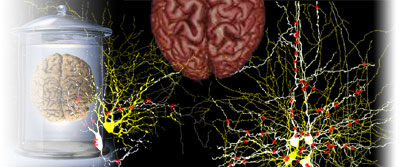
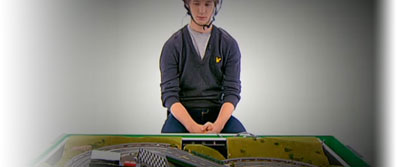
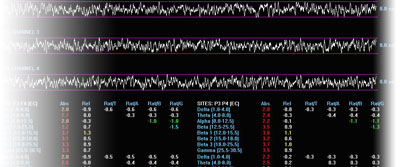
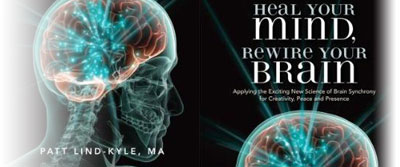
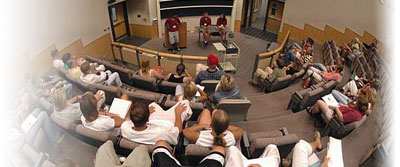
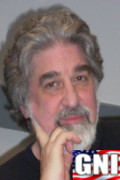 Thomas Collura
Thomas Collura Steve Warner
Steve Warner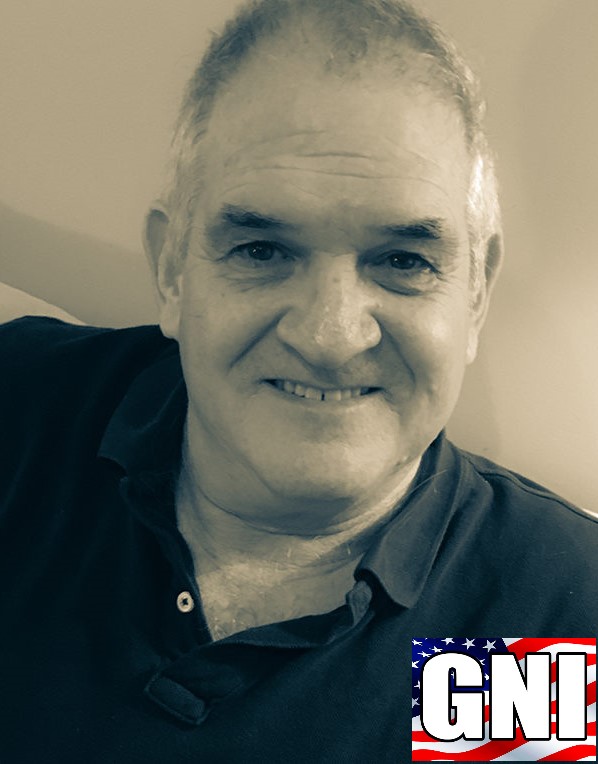 Jeff Reich
Jeff Reich Dolores Gaxiola
Dolores Gaxiola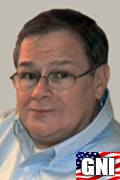 J. Michael Griffin
J. Michael Griffin Richard McAlister
Richard McAlister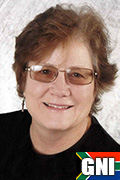 McGill Scott
McGill Scott John Demos
John Demos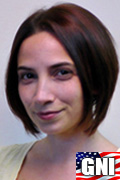 Penijean Gracefire
Penijean Gracefire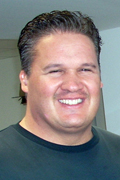 Bill Mrklas
Bill Mrklas Mark Smith
Mark Smith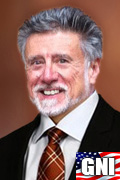 Dick Genardi
Dick Genardi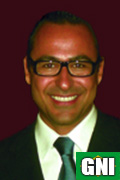 Leonardo Mascaro
Leonardo Mascaro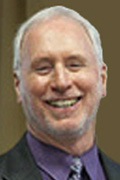 Thomas Brownback
Thomas Brownback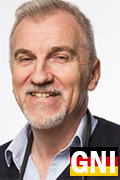 Thomas Feiner
Thomas Feiner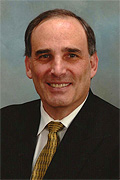 David Cantor
David Cantor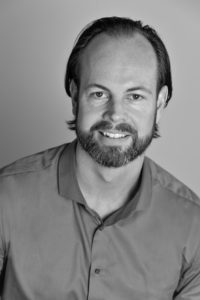 Andre Keizer
Andre Keizer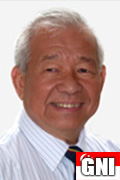 Joseph Guan -Tech
Joseph Guan -Tech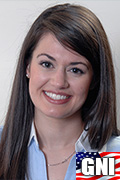 Christen Stahl
Christen Stahl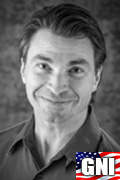 Jeff Tarrant
Jeff Tarrant Debora Joy Elliott
Debora Joy Elliott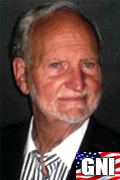 Jacob Elliott
Jacob Elliott Wes Center
Wes Center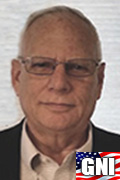 Rich Davis
Rich Davis Lori Miller
Lori Miller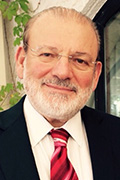 Giuseppe Chiarenza
Giuseppe Chiarenza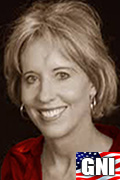 Yvonne Tate
Yvonne Tate Lisa Black
Lisa Black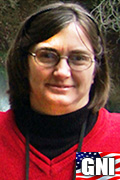 Kathie Schofield
Kathie Schofield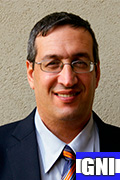 Doron Todder
Doron Todder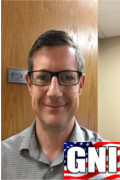 Jay Gattis
Jay Gattis Donna Creasy
Donna Creasy Kristen Elliott
Kristen Elliott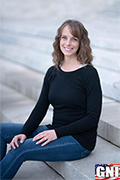 Dayna Naver
Dayna Naver





